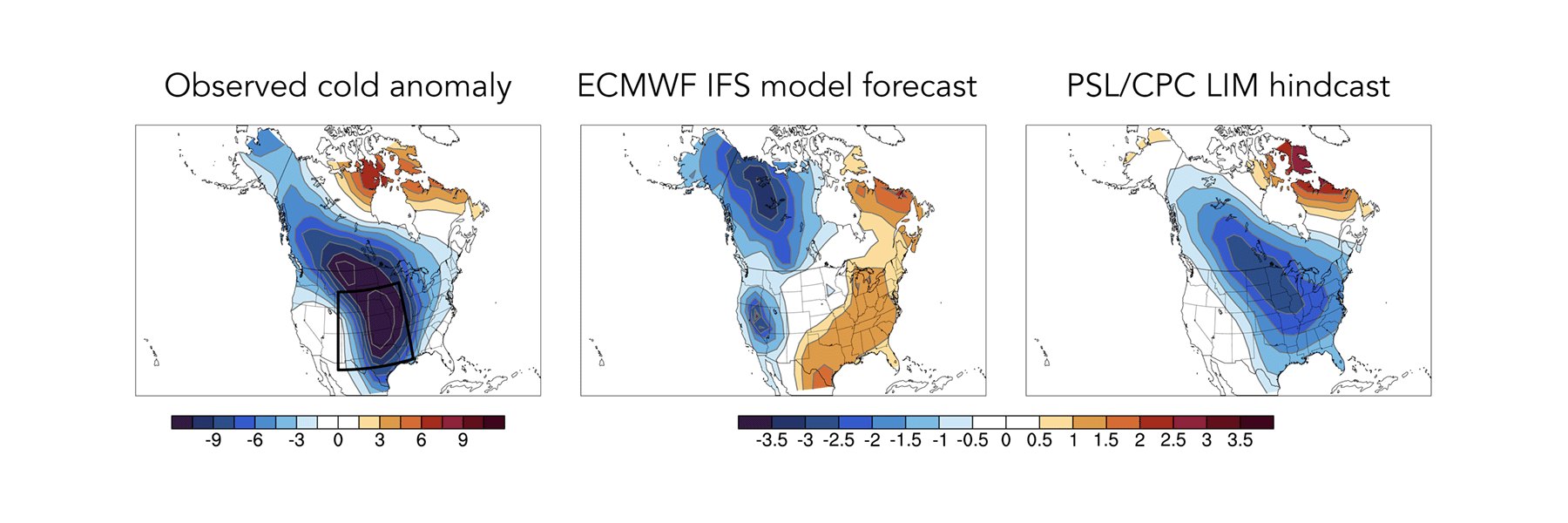How far ahead could the February 2021 central US cold snap have been predicted? New study investigates sources of predictability of the event

In February 2021, the central United States experienced a record-breaking cold air outbreak event of exceptional persistence, intensity, and expanse, which became the costliest US winter storm on record. In a new study to be published in the Bulletin of the American Meteorological Society, CIRES and NOAA researchers at the Physical Sciences Laboratory (PSL) investigate the sources of predictability of the event using a machine learning-based prediction model. The Linear Inverse Model (LIM), which was developed at PSL and is currently being run experimentally at the NOAA's Climate Prediction Center, was able to predict portions of the event up to four weeks in advance and identify the atmosphere-ocean processes responsible for the predictable and unpredictable portions of the event.
The LIM shows that the February 2021 cold air outbreak was principally caused by unpredictable internal atmospheric variability and predictable effects of La Niña, with nominally predictable contributions from the previous month's sudden stratospheric warming and the Madden-Julian Oscillation.
When run as a climate model, the LIM estimates that this event was in the top 1% of cold air outbreak severity. The study finds that while similarly severe cold air outbreaks only have about a 4% chance of occurring during a given year, such events are far from rare. On average, the most severe events can be expected to occur every 20-30 years, with slightly less severe cold air outbreaks occurring at least once per decade.
The LIM was able to predict, with high confidence, the increased risk of the February 2021 cold air outbreak 3-4 weeks in advance, which suggests that impacts to at-risk communities resulting from future extreme events might be mitigated by providing improved advanced warning capabilities to decision makers.
Figure: Temperature anomaly maps comparing observations (left), the European Center for Medium Range Weather Forecasting IFS model forecast (center), and the LIM reforecast (right) for the February 2021 event.
Albers, John (PSL/CIRES), Matthew Newman (PSL/CIRES), Andrew Hoell (PSL), Melissa Breeden (PSL/CIRES), Yan Wang (PSL/CIRES), and Jiale Lou (PSL/CIRES) (2022). The February 2021 Cold Air Outbreak in the United States: a Subseasonal Forecast of Opportunity. Bull. Amer. Meteor. Soc., https://doi.org/10.1175/BAMS-D-21-0266.1.
Posted: October 28, 2022